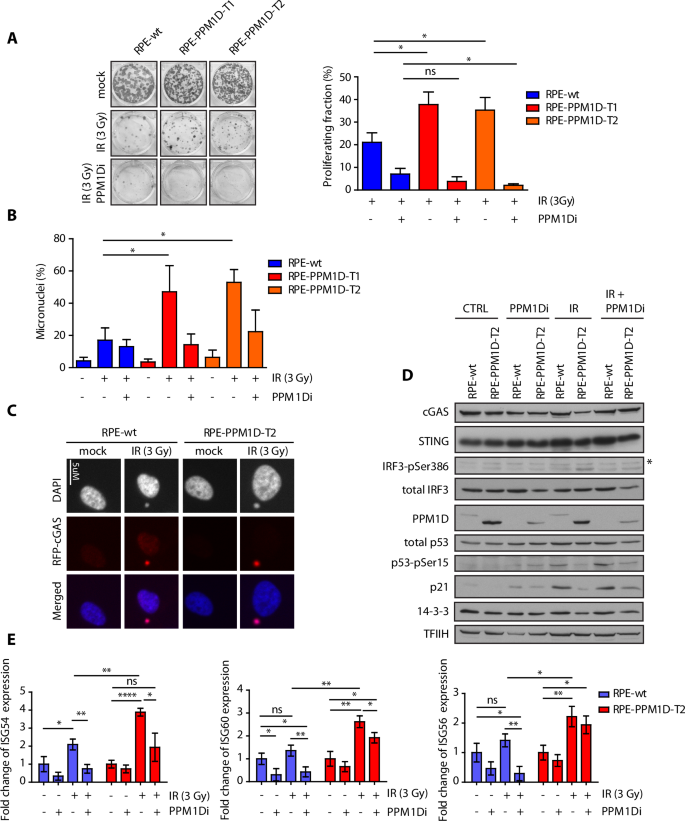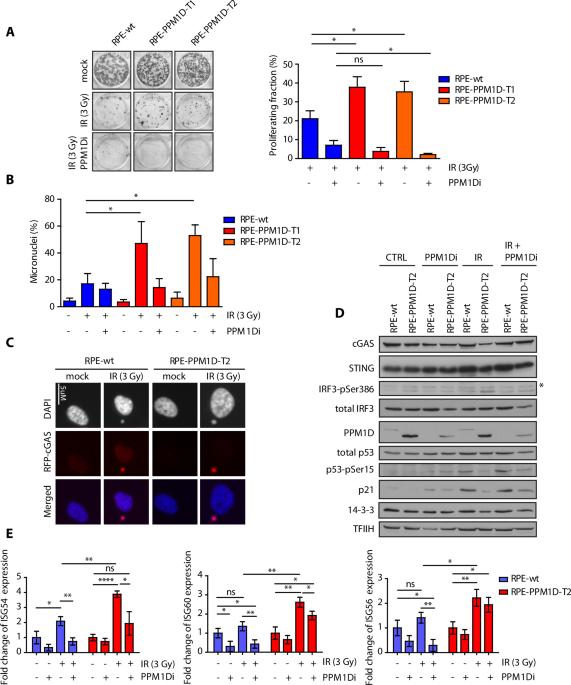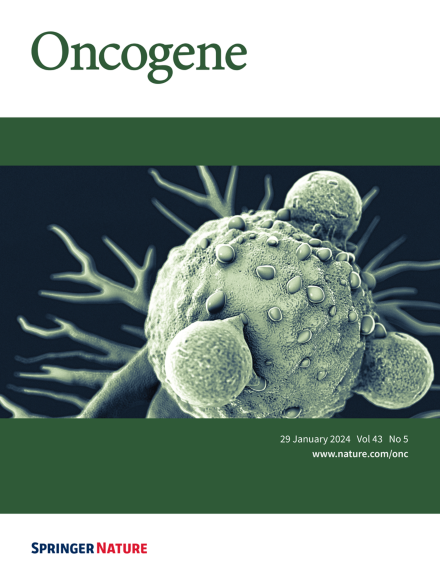PPM1D activity promotes cellular transformation by preventing senescence and cell death
IF 6.9
1区 医学
Q1 BIOCHEMISTRY & MOLECULAR BIOLOGY
引用次数: 0
Abstract
Cell cycle checkpoints, oncogene-induced senescence and programmed cell death represent intrinsic barriers to tumorigenesis. Protein phosphatase magnesium-dependent 1 (PPM1D) is a negative regulator of the tumour suppressor p53 and has been implicated in termination of the DNA damage response. Here, we addressed the consequences of increased PPM1D activity resulting from the gain-of-function truncating mutations in exon 6 of the PPM1D. We show that while control cells permanently exit the cell cycle and reside in senescence in the presence of DNA damage caused by ionising radiation or replication stress induced by the active RAS oncogene, RPE1-hTERT and BJ-hTERT cells carrying the truncated PPM1D continue proliferation in the presence of DNA damage, form micronuclei and accumulate genomic rearrangements revealed by karyotyping. Further, we show that increased PPM1D activity promotes cell growth in the soft agar and formation of tumours in xenograft models. Finally, expression profiling of the transformed clones revealed dysregulation of several oncogenic and tumour suppressor pathways. Our data support the oncogenic potential of PPM1D in the context of exposure to ionising radiation and oncogene-induced replication stress.


PPM1D 的活性通过防止衰老和细胞死亡来促进细胞转化。
细胞周期检查点、癌基因诱导的衰老和细胞程序性死亡是肿瘤发生的内在障碍。蛋白磷酸酶镁依赖性 1(PPM1D)是肿瘤抑制因子 p53 的负调控因子,与 DNA 损伤反应的终止有关。在这里,我们研究了 PPM1D 第 6 外显子的功能增益截断突变导致 PPM1D 活性增加的后果。我们发现,当电离辐射或活性 RAS 癌基因诱导的复制压力造成 DNA 损伤时,对照组细胞会永久退出细胞周期并进入衰老期,而携带截短 PPM1D 的 RPE1-hTERT 和 BJ-hTERT 细胞在 DNA 损伤时会继续增殖,形成微核,并积累核型所显示的基因组重排。此外,我们还发现,PPM1D 活性的增加促进了细胞在软琼脂中的生长和异种移植模型中肿瘤的形成。最后,对转化克隆的表达谱分析揭示了几种致癌和抑瘤通路的失调。我们的数据支持 PPM1D 在暴露于电离辐射和癌基因诱导的复制压力下的致癌潜力。
本文章由计算机程序翻译,如有差异,请以英文原文为准。
求助全文
约1分钟内获得全文
求助全文
来源期刊

Oncogene
医学-生化与分子生物学
CiteScore
15.30
自引率
1.20%
发文量
404
审稿时长
1 months
期刊介绍:
Oncogene is dedicated to advancing our understanding of cancer processes through the publication of exceptional research. The journal seeks to disseminate work that challenges conventional theories and contributes to establishing new paradigms in the etio-pathogenesis, diagnosis, treatment, or prevention of cancers. Emphasis is placed on research shedding light on processes driving metastatic spread and providing crucial insights into cancer biology beyond existing knowledge.
Areas covered include the cellular and molecular biology of cancer, resistance to cancer therapies, and the development of improved approaches to enhance survival. Oncogene spans the spectrum of cancer biology, from fundamental and theoretical work to translational, applied, and clinical research, including early and late Phase clinical trials, particularly those with biologic and translational endpoints.
 求助内容:
求助内容: 应助结果提醒方式:
应助结果提醒方式:


